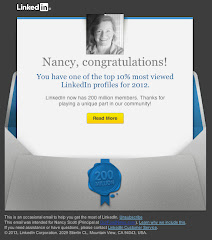Webinars were hot about two years ago when users first caught up with the technology. Then webinars went quiet. I suspect that’s the time promoters found out people weren’t rushing to pay $199 (or more) for webinar information that’s readily available from a lot of other sources. We can all buy a book for $14, download a free white paper, read an eNewsletter, follow a group of informed bloggers, or even – with effort – Google search any topic.
Now, webinar sponsors have embraced content marketing.
In the past two months, content marketing webinars are eating up the landscape. The new model is free, short, and friendly. Since mid-March, I’ve had offers to attend six free webinars. Not only were these webinars complimentary, they aired for only an hour. Short is good and we’ll likely start seeing the ½-hour “blinkety-blink-blink” version soon.
I listened in on two of the six and would have indulged in two more had time been available. One of these (Anne Holland’s “Winning with Better Landing Pages”) taught me a lot and I spread the wealth via my blog post. I did something similar in December when I blogged about Chris Brogan and Pawan Desphande’s “Content Curation” webinar. Maybe that was a pay-off for the sponsors. I hope so.
I also missed a webinar I’d registered to attend. I certainly meant to attend, so I was happy when the sponsors acknowledged my empty seat. The follow-up email came a couple hours after the webinar finished, telling me I’d receive a link as soon the webinar was posted online. That’s a classy move (thank you, Marketing Experiments) and should count among webinar “best practices.”
Sponsors appear to have realized that webinars are a poor substitute for in-person meetings/seminars. Moreover, the early promise of webinars as a money-making scheme flopped. Webinars are, however, a superb approach to PR, branding, customer service, and community building -- otherwise known as “content marketing.”
-- scrubbed by MarketingBrillo

